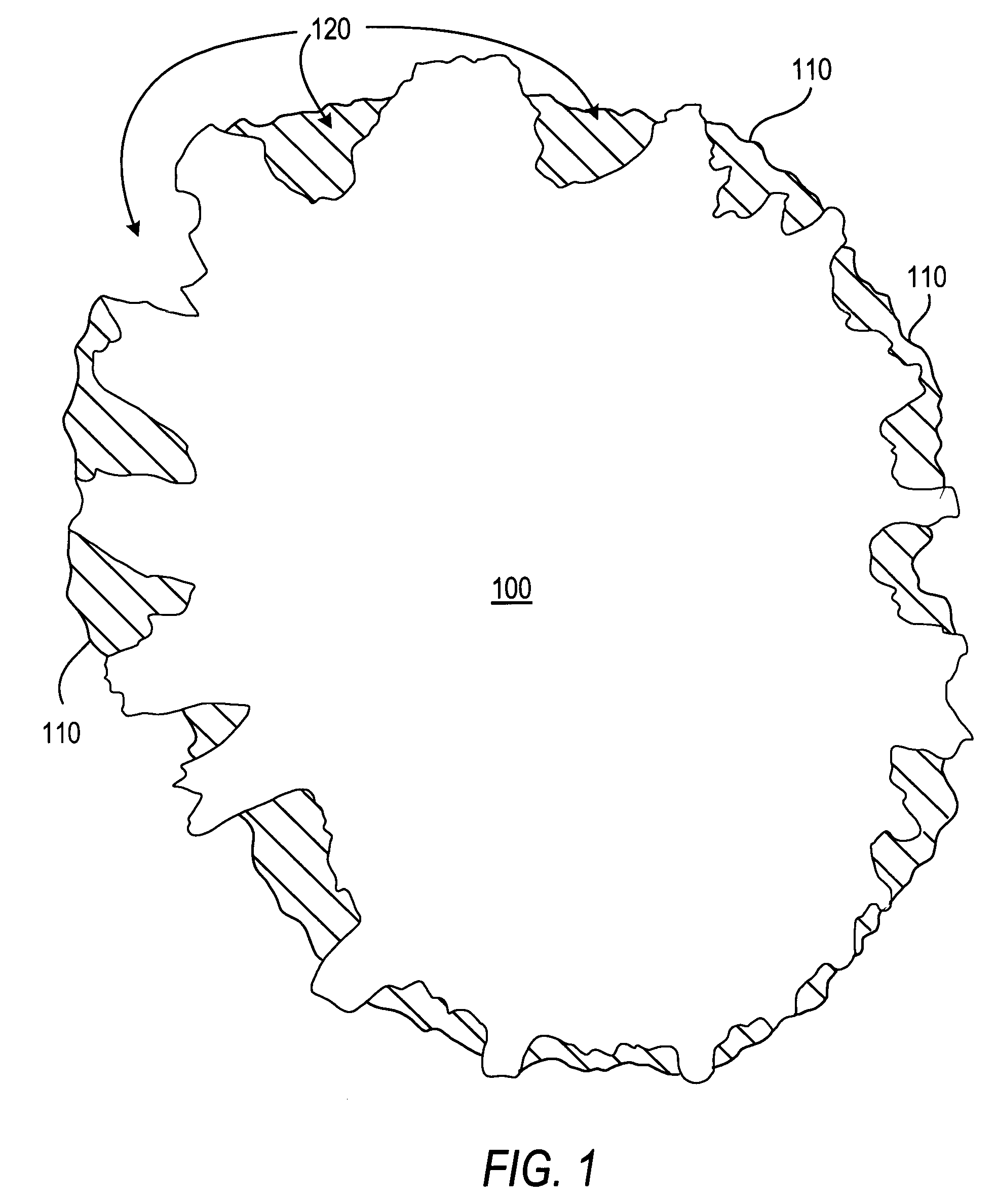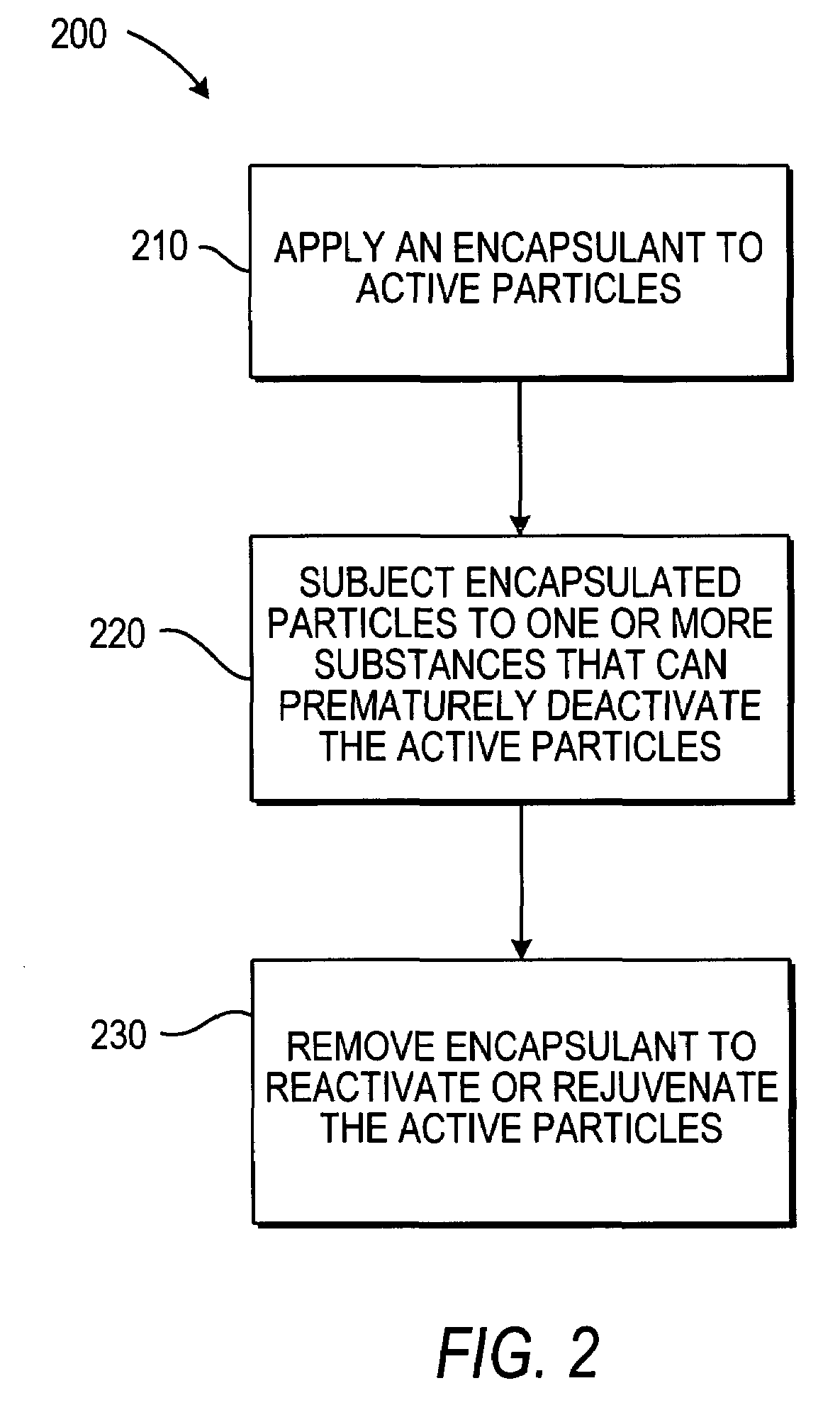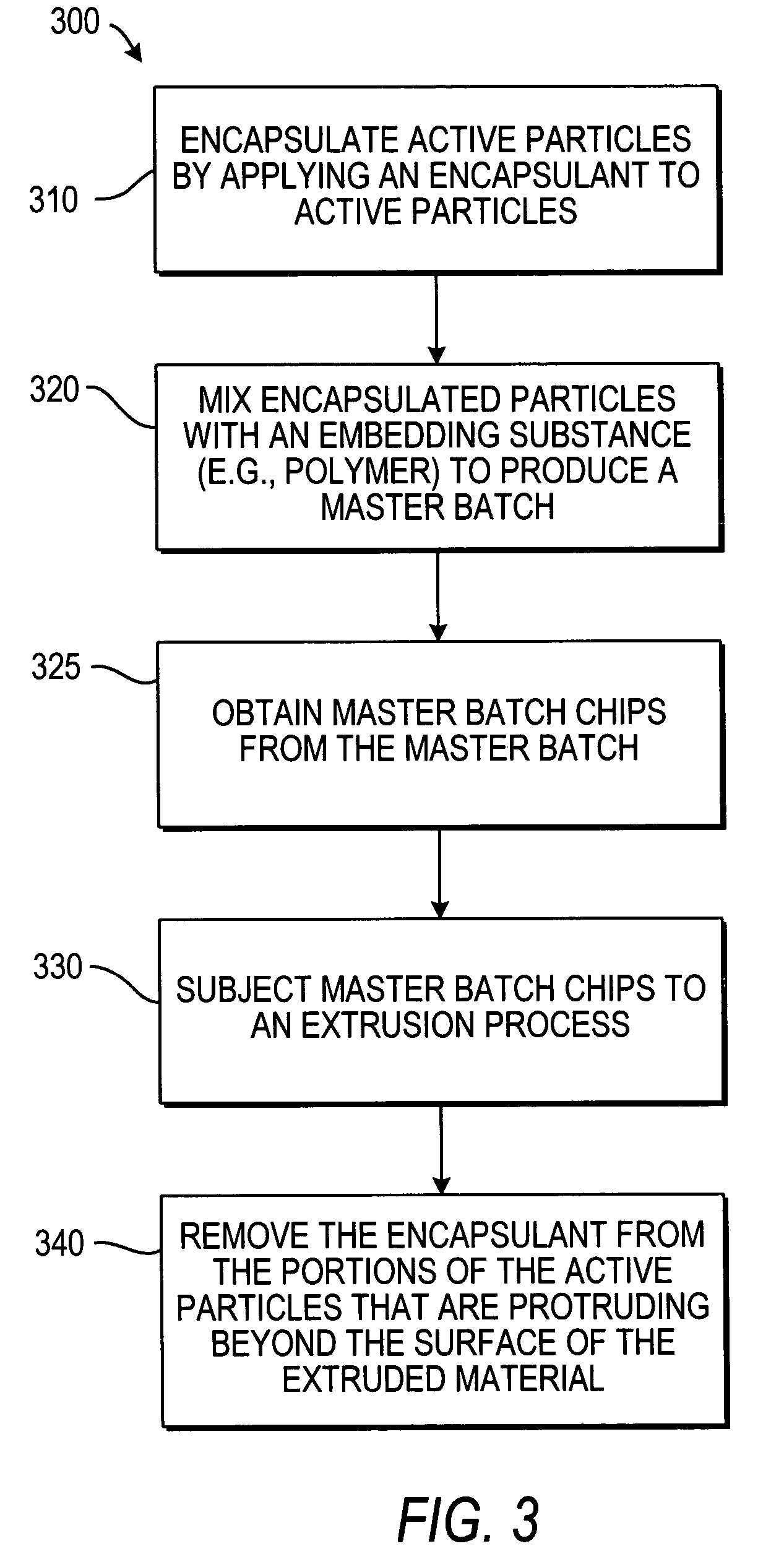Encapsulated active particles and methods for making and using the same
a technology of active particles and encapsulated particles, which is applied in the field of preserving the properties of active particles, can solve the problems of premature deactivation of active particles, inability to easily remove, and inability to maintain the hand and feel, etc., and achieves the effects of reducing the number of active particles
- Summary
- Abstract
- Description
- Claims
- Application Information
AI Technical Summary
Benefits of technology
Problems solved by technology
Method used
Image
Examples
example 1
[0085]This example shows that a performance enhanced synthetic yarn was produced according to the process of FIG. 3. More particularly, this example shows that the method of encapsulating the activated carbon, mixing it with a polyester base material to form master batch chips, extruding the master batch chips to produce the desired yarn, and removing the protective encapsulation layer from the exposed activated carbon particles was performed. The yarn obtained through this example showed substantial adsorptive capacity in addition to exhibiting the physical characteristics associated with the polyester base material. Thus, the yarn had the hand and feel of the polyester, but also had performance enhanced qualities (e.g., odor adsorption) imparted to it by the activated carbon.
[0086]The activated carbon used in this example is sold as model number SA-30 by CarboChem Corporation, of Ardmore, Pa. The SA-30 was further jet milled and classified such that 97% of the carbon particles had...
example 2
[0101]A procedure similar to that set forth in Example 1 was repeated, but a different master batch was created by using a different encapsulant. The results of this example are shown in FIG. 7. The master batch used in this example used the same classified SA-30 carbon as that used in Example 1 and a encapsulant wax layer sold as Textile Wax W, by BASF, of Charlotte, N.C.
[0102]The sample was diluted down to a 2% carbon loading using the above-mentioned master batch. After the extruded fibers were obtained through the extrusion process, the fibers were knitted into a tubular fabric (e.g., sock). Even though the fibers where drawn at 4-to-1 ratio, the fibers had a denier of 5, instead of the 4.4 denier realized by the fibers in Example 1. A 100 square centimeter portion of the tubular fabric was removed, washed, and tested.
[0103]FIG. 7 shows the same measured weights and calculated activity values as that obtained in Example 1. The data in FIG. 7 also shows data for the pure form of ...
PUM
| Property | Measurement | Unit |
|---|---|---|
| size | aaaaa | aaaaa |
| diameter | aaaaa | aaaaa |
| weight | aaaaa | aaaaa |
Abstract
Description
Claims
Application Information
 Login to View More
Login to View More - R&D
- Intellectual Property
- Life Sciences
- Materials
- Tech Scout
- Unparalleled Data Quality
- Higher Quality Content
- 60% Fewer Hallucinations
Browse by: Latest US Patents, China's latest patents, Technical Efficacy Thesaurus, Application Domain, Technology Topic, Popular Technical Reports.
© 2025 PatSnap. All rights reserved.Legal|Privacy policy|Modern Slavery Act Transparency Statement|Sitemap|About US| Contact US: help@patsnap.com



